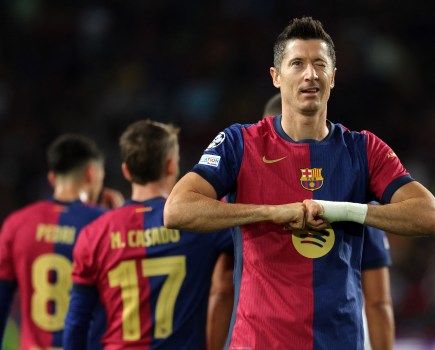 ‘We’re not German; We’re not Polish; We’re Silesian.’ This is a common refrain from members of the Silesian minority in the industrial region of Upper Silesia in southern Poland. With a population of around 2,000,000, the Upper Silesian Metropolitan Union (GZM), whose largest city is Katowice, is one of the biggest urban agglomerations in Europe. For many years, this densely populated region straddled the border between Germany and Poland, with Katowice (Kattowitz) part of the German Empire and neighbouring Sosnowiec part of Congress Poland.
‘We’re not German; We’re not Polish; We’re Silesian.’ This is a common refrain from members of the Silesian minority in the industrial region of Upper Silesia in southern Poland. With a population of around 2,000,000, the Upper Silesian Metropolitan Union (GZM), whose largest city is Katowice, is one of the biggest urban agglomerations in Europe. For many years, this densely populated region straddled the border between Germany and Poland, with Katowice (Kattowitz) part of the German Empire and neighbouring Sosnowiec part of Congress Poland.
After the First World War, the League of Nations arranged for a plebiscite to determine the fate of the region, with Western Upper Silesia remaining part of Germany and Eastern Upper Silesia joining with the Second Polish Republic (although given a considerable degree of political autonomy). When the Germans invaded in 1939, Polish Upper Silesia was annexed to the Third Reich and many Silesians were granted German citizenship.
After the Second World War, it was agreed at the Yalta Conference that the borders of the new Polish People’s Republic would include all of Upper Silesia (which had always contained a large Polish population) and Lower Silesia (which had been predominantly German). Ethnic Germans (and many Silesians who had fought alongside the Germans) were forced to move out of the region, replaced by Poles from areas such as the Eastern city of Lwów (L’viv), which was now part of Ukraine.
In 1956, the communist authorities built Stadion Śląski, a 120,000 capacity stadium, in the agglomeration’s Chorzów Park, one of the biggest municipal parks in Europe. This was to become the venue for all of Poland’s biggest home internationals: the Soviet Union in 1957, Spain in 1959, Holland in 1969 and 1975, England in 1966, 1973, 1989, 1993, 1997 and 2004, Portugal in 2006.
Stadion Śląski also hosted Manchester United during their successful European Cup campaign of 1968, a 1-0 loss to Górnik Zabrze in the away leg of the quarter finals (memorably described by Bobby Charlton in his autobiography). Teams from the Upper Silesian agglomeration dominated Polish club football throughout the communist period, winning 26 of 42 league titles. In the 1968-69 season, six of the top eight teams in the Polish Football League were from the agglomeration (Górnik Zabrze, Polonia Bytom, Szombierki Bytom, Zagłębie Sosnowiec, Ruch Chorzów and GKS Katowice).
In 1989, the top three teams were Ruch Chorzów, GKS Katowice and Górnik Zabrze. Amazingly, since the collapse of communism in the same year, no team from Upper Silesia has won the league. This was compounded by the fact that Stadion Śląski (the stadium which through the years had hosted names such as Alfredo di Stefano, Johan Cruyff, Bobby Charlton, George Best and Cristiano Ronaldo) was overlooked as a venue for Euro 2012.
A region which had once prided itself both as a club football powerhouse and as the home of the Polish national team had been relegated into obscurity, despite being home to the country’s most populous urban area. In a 2009 article for the Guardian, acclaimed football writer Jonathan Wilson (under the mistaken impression that Chorzów’s Stadion Śląski had been chosen ahead of Kraków’s Stadion Miejski), wrote:
‘Given the success of Wisła, the local club, over the past decade, and the excellent tourist infrastructure in the city, it seems bewildering that [Kraków] was not first choice to begin with – and who, after all, wants to spend three weeks stuck in what is effectively a suburb of the grimly industrial Katowice, when they could be in a thriving town full of historic sites, lively bars and excellent restaurants?‘
Wilson’s condescending tone seemed to echo the idea that Upper Silesia, a region which once took up arms to join the Second Polish Republic, is now routinely looked down upon by the rest of Poland. Although Stadion Śląski was still nominally the home of the Polish national team at this point, a new red-and-white stadium was being built in central Warsaw, named Stadion Narodowy (‘National Stadium’).
A surprising source of much-needed exposure for the region came when the opposition Law and Justice party (PiS) published a report which claimed that ‘Silesian identity is just a way of cutting ties with the Polish identity and it is probably simply a camoflauged way of adopting the German option.‘ The party urged all citizens to register their nationality as Polish and not Silesian in the 2011 census, drawing the attention of international media.
Deutsche Welle TV looked at the re-formation of 1. FC Katowice as a women’s football club (‘Poland: Dispute over Silesian Minority’) and the Guardian wrote about a plan to change the colour scheme of Stadion Śląski from the Polish colours of red-and-white to the Silesian colours of yellow-and-blue (‘Upper Silesia flags up its call for autonomy’).
Both focussed on the region’s proud footballing history as a means of expressing its distinctive identity. What neither mentioned (perhaps because it sits uneasily with liberal sensibilities) was that the newly emerging concept of a Silesian ‘nation’ receives its most concrete support from the terraces of Ruch Chorzów, where, over the last few years, provocative banners have been displayed, reading slogans such as ‘To My Naród Śląski‘ (It’s Us, the Silesian Nation); ‘Oberschlesien‘ (Upper Silesia – in German); and even on one occasion, ‘Dziś Kosovo: Jutro Śląsk‘ (Today Kosovo: Tomorrow Silesia).
The club’s official mascot is a yellow eagle, nicknamed ‘Adlerek‘. Note that the emblematic Polish eagle is white and that the Polish word for eagle is ‘orzeł‘. The yellow eagle is a symbol of Silesia and the word ‘adlerek‘ is a Silesian dialect word for eagle, closely related to the German ‘adler‘.
One explanation for its emerging role in the promotion of Silesian identity is that the club’s most hardcore supporters are often based in the most traditionally Silesian parts of the ‘grimly industrial‘ conurbation, places such as Chorzów, Siemanowice Ślaskie, Nikiszowiec and Szopienice, where the local dialect is still widely spoken.
The closest Ruch have come to winning the league since 1989 (the most recent Upper Silesian team to do so) was in the 2011-12 season, when they finished second, a point behind surprise winners Śląsk Wrocław (based in Lower Silesia, the formerly German area which is now predominantly Polish). Third placed Legia Warszawa had led the league for most of the season, including at Easter when they hosted Ruch Chorzów with just a point separating the two teams and six matches left to play.
An unlikely away win for Ruch would have made them huge title contenders and, as we have seen, this would have gone a long way towards restoring regional pride. A 15th league title would have seen Ruch move clear of local rivals Górnik Zabrze to become the most successful team in Polish football outright. Since 1989, both teams have been tied on 14 league titles each.
Adding extra spice to this match was the political dimension, with fans of Legia Warszawa (the army team) widely seen as ultra-loyal Polish nationalists, and certainly never ones to shy away from political confrontation. During a September 2011 Europa League match against (politically leftist) Israeli side Hapoel Tel Aviv, fans of the Warsaw club had unveiled a huge banner reading ‘Jihad Legia’. It should also be noted that Legia have a lot of fans in Sosnowiec and the surrounding Dąbrowa basin, which (although part of the GZM conurbation) historically identifies itself with Poland rather than Upper Silesia.
If Ruch Chorzów are the ‘Polish Barcelona’ then Legia Warszawa are the ‘Polish Real Madrid’ and this was more than just a six-point top-of-the-table clash. As well as ending Ruch’s nine-game unbeaten run, Legia’s 2-0 victory prompted a bitter response from Jerzy Gorzelik, the leader of the Silesian Autonomy Movement (RAŚ), who labelled the winners ‘postkomuchami‘ (a pejorative term for post-communists) with about four-times Ruch’s budget.
This idea that particular football teams and moreover particular cities have benefited more from the postcommunist settlement than others is key to understanding the rising localism and support for greater political autonomy in Upper Silesia. The budget problems of the once dominant Upper Silesian teams is a major factor in their long period of underachievement, not just at Ruch Chorzów but also at Górnik Zabrze and GKS Katowice.
Since the collapse of communism in 1989 (when these three teams were the top three in Poland), the league has been won by teams from Poznań, Lubin, Warsaw, Łódź, Kraków and now Wrocław. The Euro 2012 host venues were in Warsaw, Wrocław, Poznań and Gdańsk. This is the context in which Ruch Chorzów’s fans’ increasing identification with the region as opposed to the nation state is best understood.
Ruch Chorzów and Legia Warszawa met again in the 2012 Polish Cup final. During the build-up to kick-off, Ruch’s fans could be heard chanting ‘Górny Śląsk‘ (Upper Silesia) before the national anthem had finished playing. YouTube footage suggests that there was some confusion, with the national anthem unexpectedly starting up again just after the chanting had begun.
An innocent mistake then, but one which was seen as politically significant by those who wanted to see it that way. Of course Upper Silesia is not Catalonia and Ruch Chorzów are no Barcelona, but the region has genuine grievances symbolised by its unique football narrative. Shakhtar Donetsk provide a compelling counter-example to the East of how increased investment in the football team can boost the profile of an industrial region. In Germany, the Ruhr agglomeration is well represented by Borussia Dortmund and Schalke.
The quality of Polish football is relatively poor and yet since 1989, Górnik Zabrze and Ruch Chorzów, historically the top two clubs in Poland, often struggle to compete with better funded rivals from Warsaw, Kraków, Wrocław and Poznań (not to mention Łódź and Gdańsk). The increased competetiveness of the Ekstraklasa is of course something to celebrate but when a region which once prided itself on having the best football teams and the biggest stadium fares so badly for so long, to then be dismissed as ‘grimly industrial‘ will only add to feelings of anger and resentment.
Some Ruch Chorzów fans justify their often controversial emphasis of local identity on the idea that Silesian loyalty to Poland shouldn’t be taken for granted. There is an historical precedent for Silesian Autonomy within Poland (1922-1939) and many Upper Silesians who don’t consider themselves ethnically or culturally ‘Silesian’ accept the potential economic benefits political autonomy would bring to the region, one of the richest in Poland. If any way could be found to divert some of that money back into the region’s football infrastructure, it would represent a welcome reversal of recent trends.
By Tom Riley
This article originally appeared in In Bed with Maradona






